Sugar plantations, a phrase intricately entwined with the fabric of Antigua’s history, unveil a compelling narrative that has shaped this Caribbean gem.
Sugar cane agriculture converted Antigua into a booming center of sugar production beginning in the 17th century, pushing the island to affluence but taking a harsh toll on the lives of those who labored on its fields. As you delve into the captivating story of Antigua’s sugar era, you’ll witness the rise and fall of its plantations, explore remnants like Betty’s Hope and Harmony Hall, and discover the cultural legacy that continues to breathe life into this fascinating destination.
Get ready to embark on a journey through time, where the allure of Antigua’s sugar plantations reveals a tale that both captivates and enlightens.
The Sugar Era: Impact on Antigua’s History
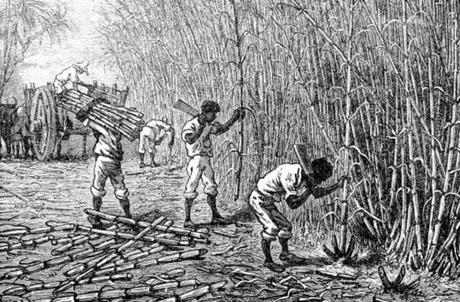
Antigua, a Caribbean jewel known for its stunning beaches and vibrant culture, holds a rich historical past that shaped its identity. The age of sugar plantations, which left an unmistakable stamp on the island, is at the center of its history.
Antigua became a significant sugar-producing center once the planting of sugar cane began in the 17th century. This subheading explores the profound impact of the sugar era on Antigua’s history.
Antigua’s plantations prospered during the height of the sugar business, establishing the island as one of the most opulent in the area. The demand for sugar drove the expansion of plantation estates and the importation of enslaved Africans to work in the fields.
The labor-intensive cultivation of sugar cane fueled the growth of plantation society, with the planters amassing wealth and power. However, this prosperity came at a tremendous human cost, as the enslaved individuals endured unimaginable hardships and suffering.
As the sugar industry thrived, Antigua’s economy became heavily dependent on it. The island’s fortunes fluctuated with changes in global sugar prices and market conditions. Antigua experienced both periods of economic prosperity and downturns.
The legacy of the sugar era can still be witnessed in Antigua’s landscape and cultural heritage, making it a fascinating destination for history enthusiasts looking to delve into the island’s past.
Betty’s Hope: Remnants of a Historic Sugar Plantation
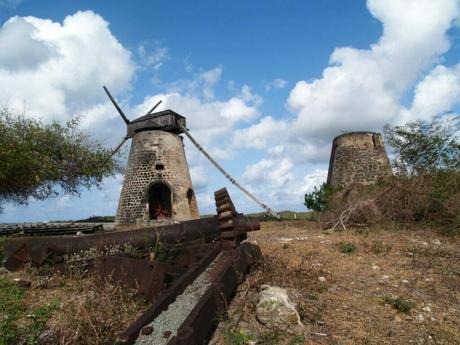
A visit to Betty’s Hope offers a captivating glimpse into Antigua’s sugar plantation heritage. Located in the northeastern part of the island, Betty’s Hope was once one of Antigua’s largest sugar estates. It is now a living witness to the island’s past. As you explore the site, you’ll encounter the ruins of the sugar mill, the boiling house, and the Great House.
The sugar mill, with its towering windmill, served as the heart of the estate. Here, the process of turning sugar cane into crystallized sugar took place. The boiling house, where the sugar cane juice was transformed into raw sugar, stands as a haunting reminder of the laborious and intricate process involved.
Adjacent to the mill and boiling house, the Great House, once the residence of the plantation owner, offers a glimpse into the opulent lifestyle of the planter class.
Betty’s Hope also houses a museum where visitors can delve deeper into the history of the plantation. Through artifacts, exhibits, and informative displays, visitors can gain a comprehensive understanding of the lives of both the enslaved individuals and the plantation owners.
Betty’s Hope is a heartbreaking reminder of the island’s past’s complexity and injustices, a spot where tourists may reflect on the impact of the sugar period and the tenacity of those who experienced it.
Harmony Hall: A Cultural Center Amidst Former Plantation
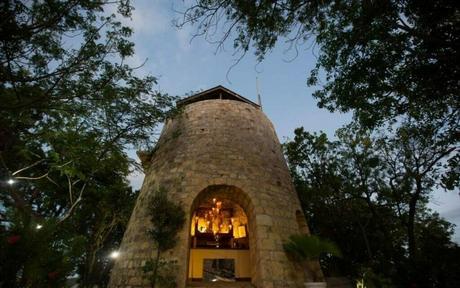
Nestled on the eastern coast of Antigua, amidst the remnants of a former sugar plantation, lies Harmony Hall. This magnificently restored colonial building is now a thriving cultural center with a unique mix of art, history, and gastronomic pleasures. A visit to Harmony Hall provides a captivating juxtaposition of the island’s sugar plantation past and its present-day creative spirit.
Harmony Hall, which was originally established as a sugar mill in the 18th century, was converted into an art gallery in the 1980s. Today, it showcases an impressive collection of contemporary Caribbean art, featuring the works of both local and international artists. The gallery’s serene ambiance and picturesque surroundings make it a haven for art enthusiasts seeking inspiration.
In addition to the art gallery, Harmony Hall boasts a renowned restaurant that tantalizes the taste buds with a fusion of Caribbean and international flavors. As you taste the wonderful cuisine, you may take comfort in the idea that you are dining in a setting where the past and present blend harmoniously.
Harmony Hall is a testament to the island’s ability to embrace its history while fostering a vibrant and creative future.
Museum of Antigua and Barbuda: Tracing the Island’s Sugar Heritage
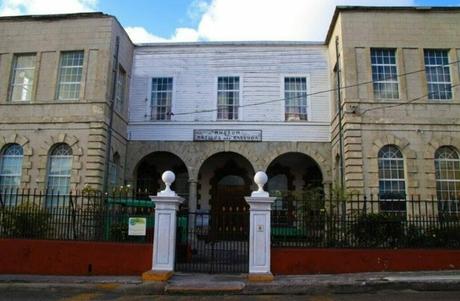
A visit to the Museum of Antigua and Barbuda is required to dig even further into the fascinating history of Antigua’s sugar plantations. Located in St. John’s, the capital city, this museum offers a comprehensive exploration of the island’s heritage, including its sugar plantation era. The museum’s displays depict Antigua’s history vividly, allowing visitors to engage with the island’s history on a fundamental level.
The museum houses a large collection of objects and papers linked to the sugar business. From tools used in the cultivation and processing of sugar cane to documents detailing the lives of both the planters and the enslaved individuals, the exhibits provide valuable insights into the island’s complex past.
In addition, the museum has interactive displays, video presentations, and educational panels that provide light on the economic, social, and cultural components of the sugar age.
A highlight of the museum is the Slave Route Gallery, which pays tribute to the resilience and strength of the enslaved individuals who shaped the island’s history. This heartbreaking and thought-provoking display allows viewers to confront the terrible facts of the transatlantic slave trade while respecting the memory of those who endured.
Cultural Legacy: The Vibrant Heritage of Antigua’s Sugar Plantations

The sugar plantation era in Antigua left a lasting cultural legacy that continues to shape the island’s vibrant heritage. The cultural fabric of Antigua exhibits a combination of African, European, and indigenous elements, which may be seen in its art, music, food, and customs.
Despite the brutality of slavery, African traditions persevered and are celebrated today. Traditional dances like the Antigua Christmas Festival showcase the dynamic fusion of African and European influences, allowing visitors to experience the vibrancy and resilience of these cultural traditions.
Antigua’s gastronomy also reflects its cultural legacy. Dishes such as pepperpot, fungee, and ducana embody the blending of African, European, and indigenous flavors, offering visitors a taste of the island’s diverse culinary heritage.
The island’s cultural legacy is further celebrated through vibrant festivals and events. The Antigua Carnival, with its bright costumes, vibrant music, and dynamic dancing, highlights the Antiguan people’s energy, inventiveness, and tenacity. These cultural celebrations invite visitors to experience the joyous festivities and embrace Antigua’s unique cultural identity.
By exploring Antigua’s cultural legacy tied to the sugar plantations, visitors gain a deeper appreciation for the island’s diverse heritage. The fusion of African, European, and indigenous influences can be experienced through traditional dances, mouthwatering cuisine, and vibrant festivals, allowing the legacy of the sugar plantation era to remain alive and cherished in the hearts of both locals and visitors alike.
FAQ
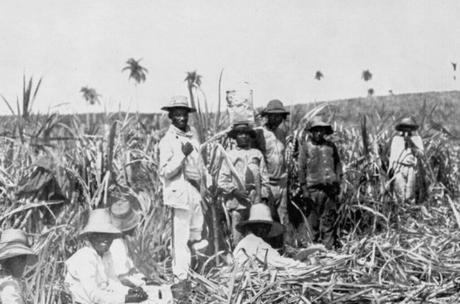
What is the history of sugar in Antigua?
Sugar played a pivotal role in Antigua’s history, shaping its economy and society. Sugar cane farming began in the 17th century, developing the island into a major sugar-producing center. The sugar industry brought prosperity to Antigua, as plantations flourished and the island became known for its sugar exports. However, this prosperity came at a great human cost, as enslaved Africans were brought to Antigua to work on the sugar plantations.
How many sugar mills are there in Antigua?
Antigua was once dotted with numerous sugar mills, each serving as a central processing point for sugar cane. There were over a hundred sugar mills on the island at the height of the sugar boom. These mills were critical in the sugar industry because they crushed and processed sugar cane to extract the juice, which was then boiled down to generate raw sugar. Many of these mills are now in ruins, while others have been conserved as historic landmarks.
What happened to slaves in Antigua?
During the sugar era, the enslaved Africans brought to Antigua endured unimaginable hardships and suffering. They were taken to the island by force to work on the sugar fields, where they were subjected to harsh working conditions and barbaric treatment. Slavery was an integral part of the sugar industry, with enslaved individuals considered property and treated as such. They were taken to the island by force to work on the sugar fields, where they were subjected to harsh working conditions and barbaric treatment. The legacy of slavery in Antigua remains a solemn reminder of the dark chapters of the island’s past.

